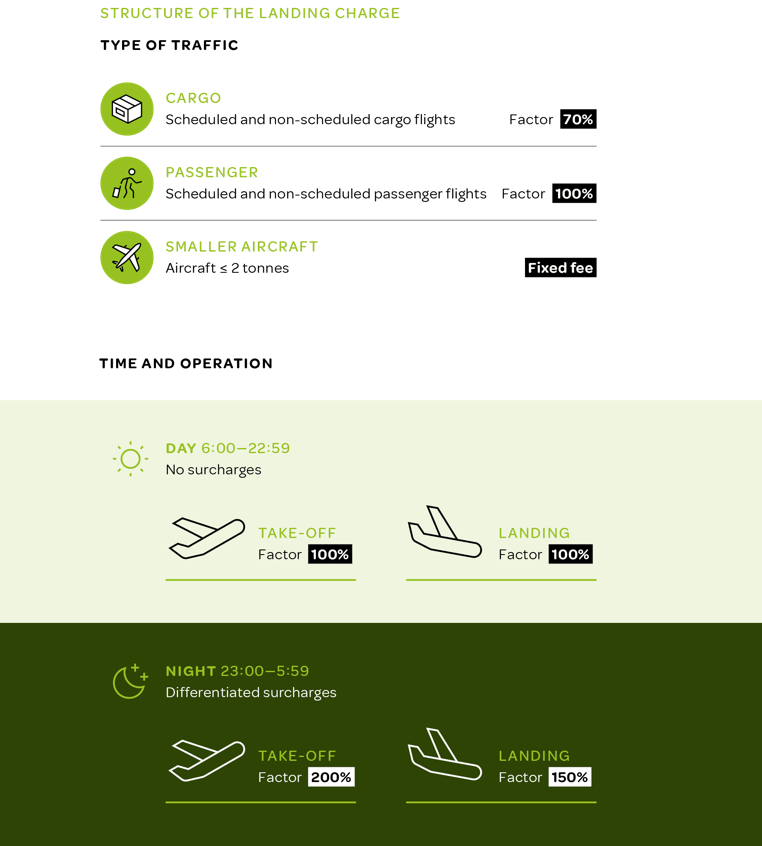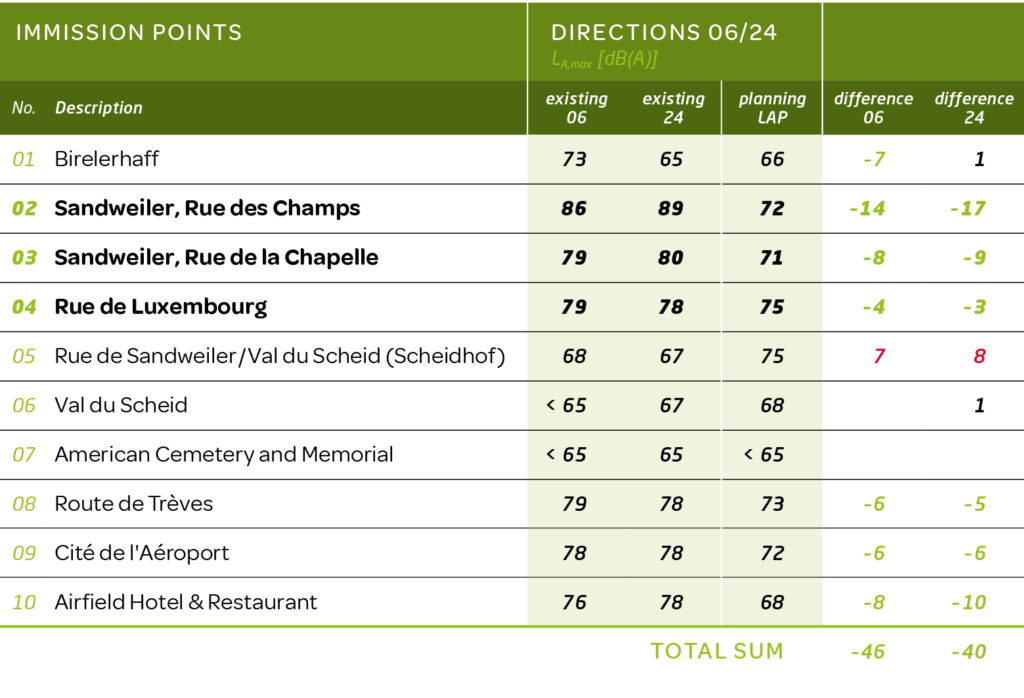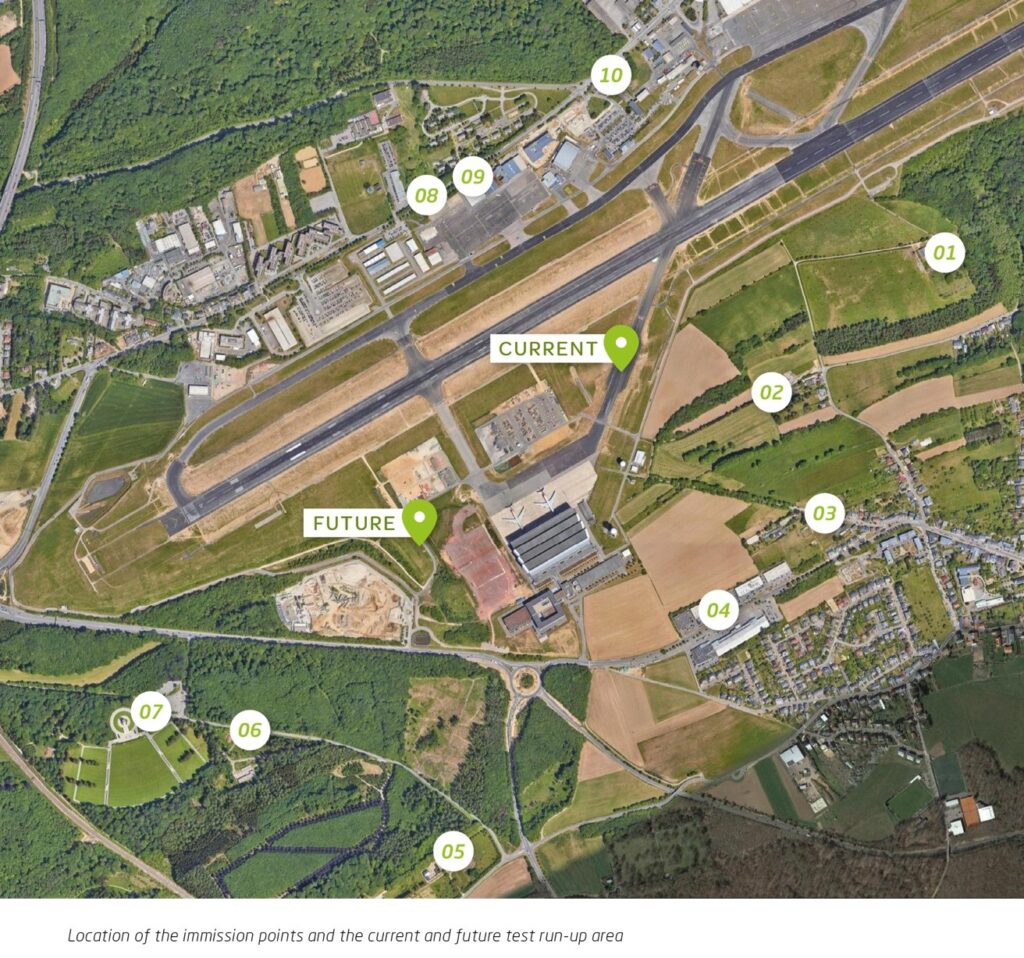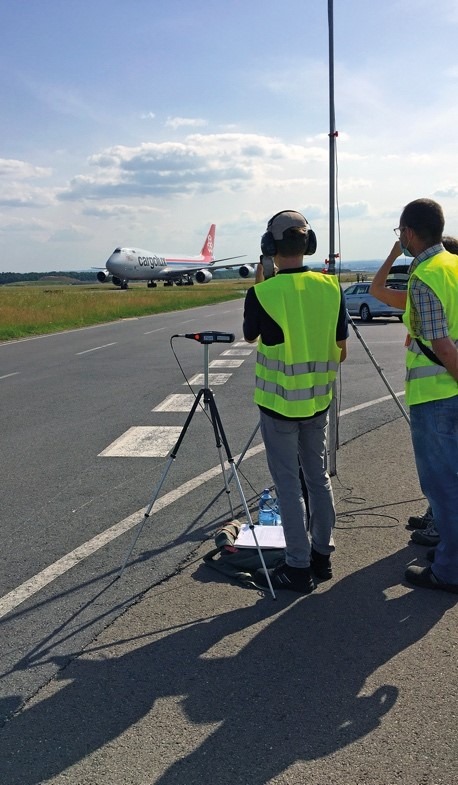| 17 | 16 |
|---|---|
| new engine run-up area max. db(A) | TÜV study emission points |
lux-Airport’s commitments
With the airport’s noise advisory board, lux-Airport is committed to improving the noise environment for its neighbors. We are working on the following topics:
- Development of theoretical scenarios for a potential evolution of the airport’s operations
- Study for a new engine test area
- Financial incentive for landings
Introducing landing charges
In the summer season of 2021, lux-Airport introduced a landing charge to recover the costs for the safe and efficient operation of the airside infrastructure. The landing charges contain several variables based on the type and time of traffic, including an environmental factor index: a noise rating index.
Noise-based landing / take-off charges
The noise factor is determined by the ACI Noise Rating Index, which specifies the noise performance of any individual aircraft compared to its certified noise limit values. A gradual adjustment of the noise factor is planned in the charges system.

New location for engine test run-up area
A new engine test run-up area has been studied in order to reduce the noise impact on the Airport’s Neighbours while ensuring continuity of Airport Activities.
Approach
The calculation of the maximum noise levels LA, max for an engine test in the run-up area (take-off thrust) is carried out using the Aviation Environmental Design Tool (AEDT). The determination and evaluation for different locations was carried out in residential areas, in particular at the boundary of the built-up area “Sandweiler locality” (immission points 2-3-4). The results are then compared between the existing and planned locations for the engine test run-up area.
Noise impact
Comparison between existing and planned locations for engine test run-up area at lux-Airport:


Intensity differences:
1 dB — barely perceptible
3 dB — clearly perceptible (means double/half sound energy)
6 dB — aircraft noise reduction of Airbus A320neo against A320ceo
10 dB — perceived about twice as loud
The conclusions are:
Clearly perceptible reduction of maximum noise levels for 7 immission points (Birelerhaff only 06)
Increase of maximum noise levels for Scheidhof
LA,max of 75 dB(A) for built-up areas in Sandweiler not exceeded
The future location meets the requirements of the operational regulation to guarantee an LA,max of 75 dB(A) for built-up areas in Sandweiler. The new site will also include fences (noise barriers) behind aircraft on the engine run-up area, which are not included in this noise calculation.
TÜV Study
lux-Airport is working on a ground noise study brought about by tüv Rheinland.
The strategic airport noise maps developed by the Administration de l’Environnement were carried out according to the calculation methods of the “Réglement Grand-ducal du 2 août 2006” implementing Directive 2009/49/EC of the European Union.In addition to these maps, and in close consultation with the Administration de l’Environnement, lux-Airport is working on a ground noise study brought about by TÜV Rheinland. In order to complete the data already available, we carried out on-site measures on the aprons and taxiways.
Status
The work plan has been submitted to the AEV, including a detailed review of the areas to be considered in the final study. Once the methodology and noise receiver points have been validated, the digital model containing the noisy activities on these areas/plots will be launched. The results of this study will help us define measures that could have an optimum impact on reducing nuisance noise to our neighbours.


Lden: average noise index for an average day of 24 hours evaluated over a year (night penalized by 5 dB [A] in the evening and 10 dB [A] at night) Lnight: average noise index for an average night of 8 hours evaluated over a year

Noise map 2016–2011 | Daytime

Noise map 2016–2011 | Nighttime

HOW THE COMMITTEE TACKLES NOISE POLLUTION
Preventive measures include, first and foremost, action at the spatial planning level (e.g. general development plan, special development plan, land use plan, model building regulations), and municipal planning (sectoral plans). These measures are part of an approach to preserve quiet areas on the urban plan.
Measures for remediation of existing noise problems include focusing on priority areas of noise management, i.e. areas with high noise levels and a large number of people affected. Action plans focus on noise reduction measures at the source, i.e. where the noise is created, which has the advantage of having an immediate impact on the external sound environment and are generally more favorable in terms of cost-effectiveness.
Where noise reduction at source is insufficient, protective infrastructures (e.g. screens and noise barriers) may be considered, provided that their integration into the environment or urban landscape is respected.
Compared to 2011, 2016 noise mapping results showed a reduction of isocontours, and therefore impacted surfaces in km2, by 6 to 9 percent.
We have achieved a reduction in the number of people impacted by the highest level of noise at night from 8,900 to 5,700 and a reduction in the number of people impacted by medium levels from 3,100 to 2,400. It was also taken into account that the total number of people exposed increases as a result of population growth around the airport.
The complete noise action plan is available on the website of the Administration of the Environment: > www.environnement.public.lu



